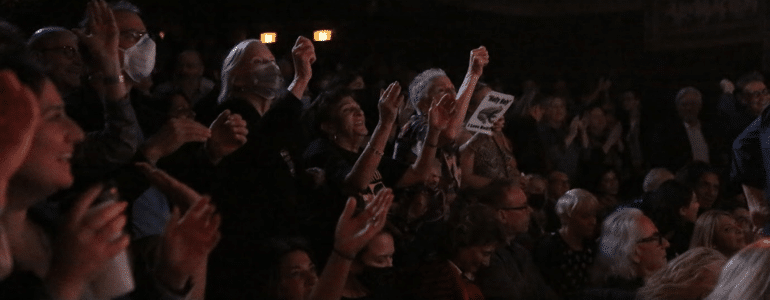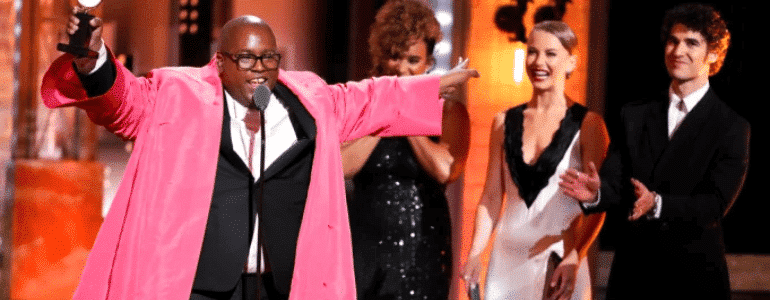Who went to see Broadway shows in 2016-17? Demographic study results revealed! (Updated)
A new year and a new study, hot off the presses from the Broadway League of who, exactly, went to see Broadway shows in the last super successful season.
Let’s go straight to the bullet point big picture takeaways . . .
- The 2016-17 season grossed $1.45 BILLION (with a B) in ticket sales.
- 13.3 million people put their butts in seats, with a 4% attendance increase per playing week.
- The New York City audience accounted for 22% of theatergoers, the highest percentage in fifteen years – or 2.85 million admissions; another 18% came from surrounding suburbs. More New Yorkers attended a Broadway show than any season since 1998–1999.
- Tourists purchased approximately 61% of all Broadway tickets.
- Attendance by theatergoers under 18 years old was 1.65 million. The number of theatergoers under 18 years old was the highest since this analysis began. (NOTE FROM KEN: Remember all those family shows we had last year? Here they are!)
- Twenty-five percent of respondents were under 25 years old.
- Moreover, there were another 1.62 million admissions by theatergoers aged 18–24.
- Approximately half of respondents said they purchased their tickets online.
- American theatergoers were more likely than others to use the internet to purchase tickets, whereas those who reside outside of the US were more likely to make the purchase in person.
- For the past several seasons, approximately two-thirds (66%) of all attendees have been female.
- Fifty-one percent of female respondents said they made the purchasing decision to see the show, compared to 44% of male respondents.
- Playgoers tended to be more frequent theatregoers than musical attendees. The play attendee saw nine shows in the past year; the musical attendee, four.
- Theatregoers reported personal recommendations as the most influential factor when it came to selecting a show to see. (NOTE FROM KEN: This stat hasn’t changed since the days of Sophocles and Shakespeare.)
- Other factors included the music, having seen the movie, internet listings and having seen the show before.
- The most popular sources for theatre information (as reported by theatregoers) other than personal recommendation were TicketMaster.com, Broadway.com, Playbill.com, and the New York Times.
- The average reported date of ticket purchase for a Broadway show was 42 days before the performance.
- The average age of the Broadway theatregoer was 41.7 years old.
- Twenty-three percent of all tickets were purchased by non-Caucasian theatregoers.
- Of theatregoers over 25 years old, 80% had completed college and 39% had earned a graduate degree.
- The average annual household income of the Broadway theatregoer was $194,940.
- The average Broadway theatregoer reported attending 4 shows in the previous 12 months. The group of devoted fans who attended 15 or more performances comprised only 5% of the audience, but accounted for 29% of all tickets (3.9 million admissions).
Why do we care about numbers like these for Broadway, and why should you also care about who is coming to your shows (or your business)?
Two reasons:
- The only way to know if marketing initiatives are working is by analyzing the numbers after the initiatives. Numbers don’t lie. You want something to increase? Try something. Check the data. And if it doesn’t come out the way you wanted, don’t make up some excuse as to why it might be “off.” Just try something else and test it again until you get it right.
- Knowing who is coming to Broadway and how/why they’re coming to Broadway, helps make it easier for us to design shows and campaigns for that audience. Does that mean we only make shows that a female tourist audience will enjoy? No. The best theater leads an audience in a new direction (e.g. Hamilton). But it does tell you that your degree of difficulty for marketing a show about 88-year-old men from Antartica might be a little more challenging. It doesn’t mean don’t do it, but I’d stoke up on that reserve and that ad budget for sure.
There’s a lot more data in this research report from the League. If you want the full copy, click here to get one. It costs a few bucks.
But great research always helps you hone your campaign, which both saves you money and makes you money.
Podcasting
Ken created one of the first Broadway podcasts, recording over 250 episodes over 7 years. It features interviews with A-listers in the theater about how they “made it”, including 2 Pulitzer Prize Winners, 7 Academy Award Winners and 76 Tony Award winners. Notable guests include Pasek & Paul, Kenny Leon, Lynn Ahrens and more.













